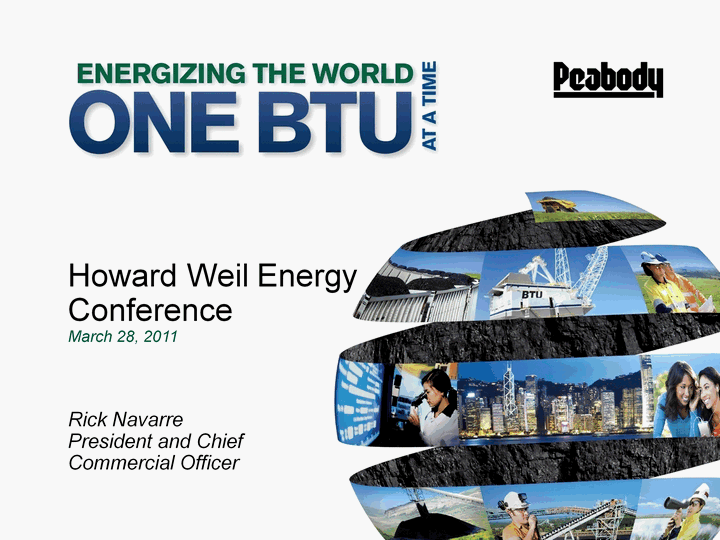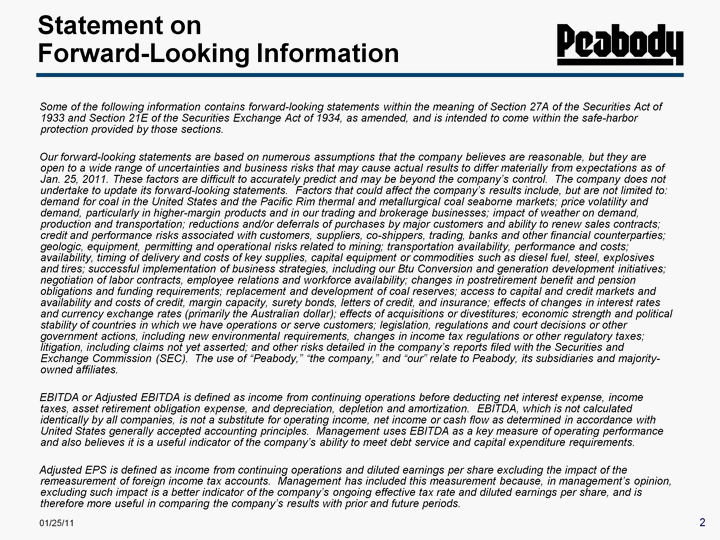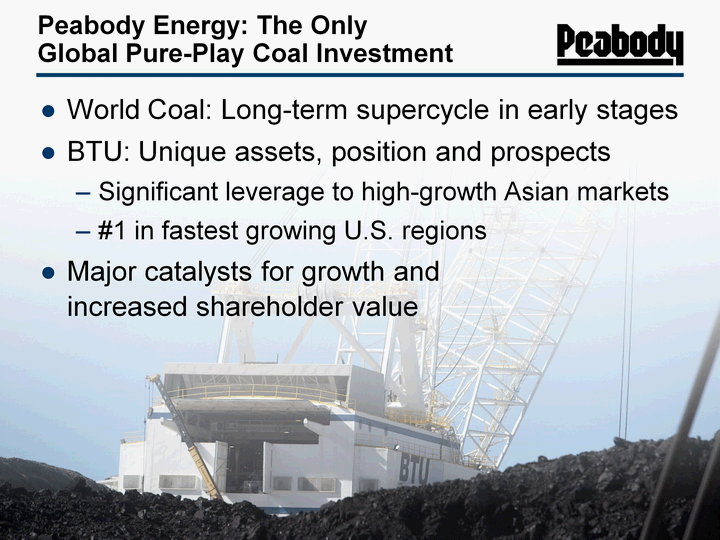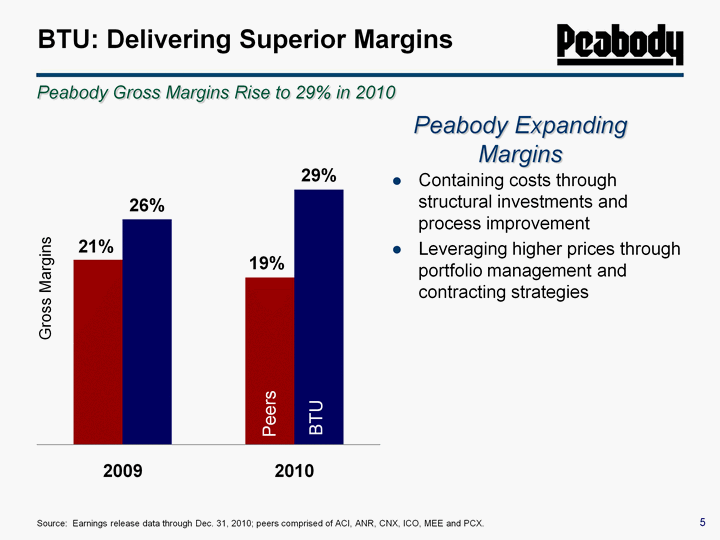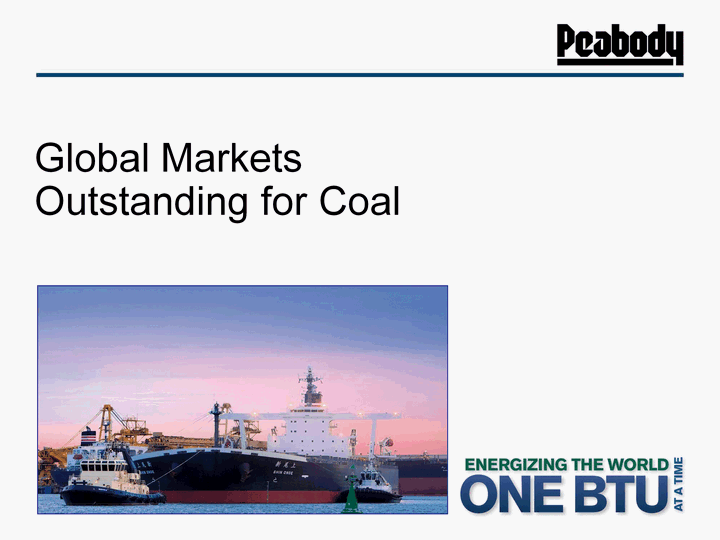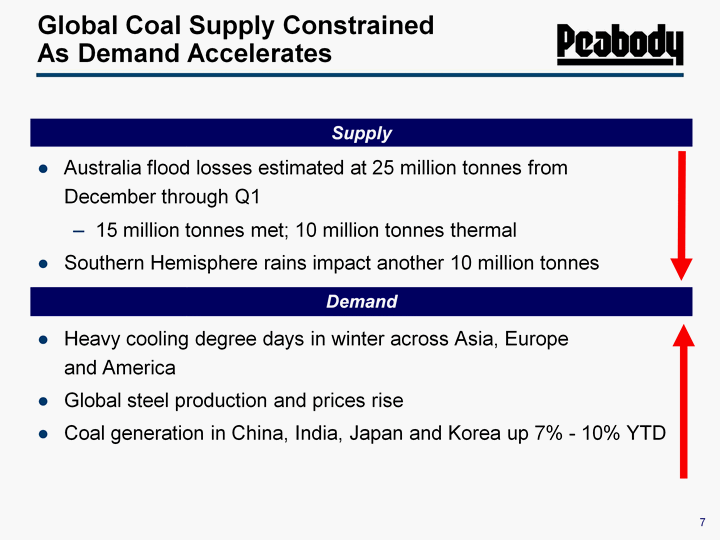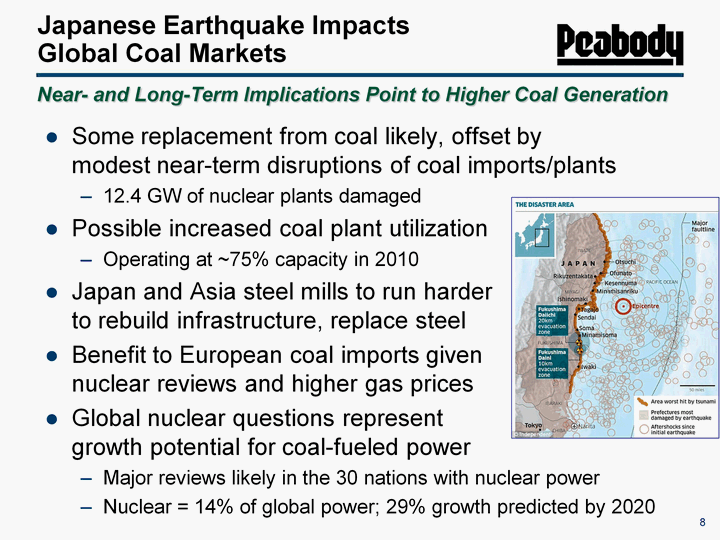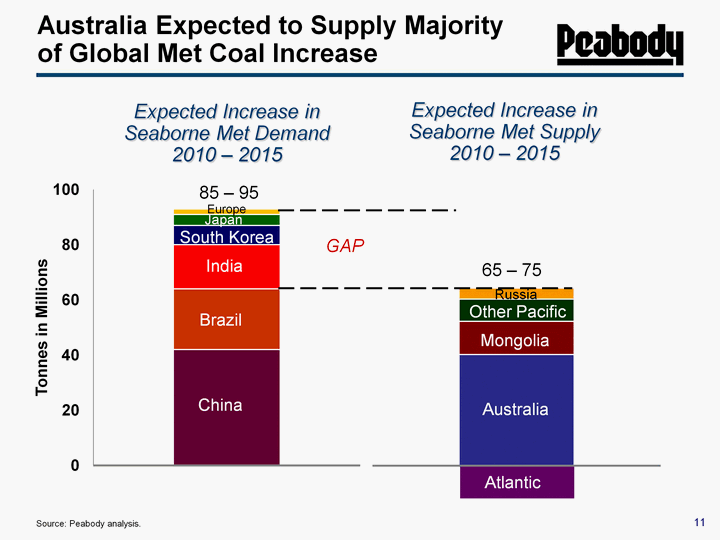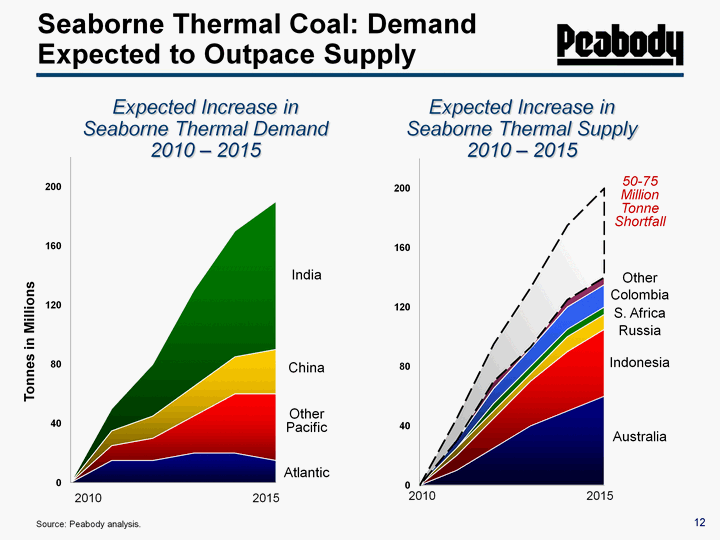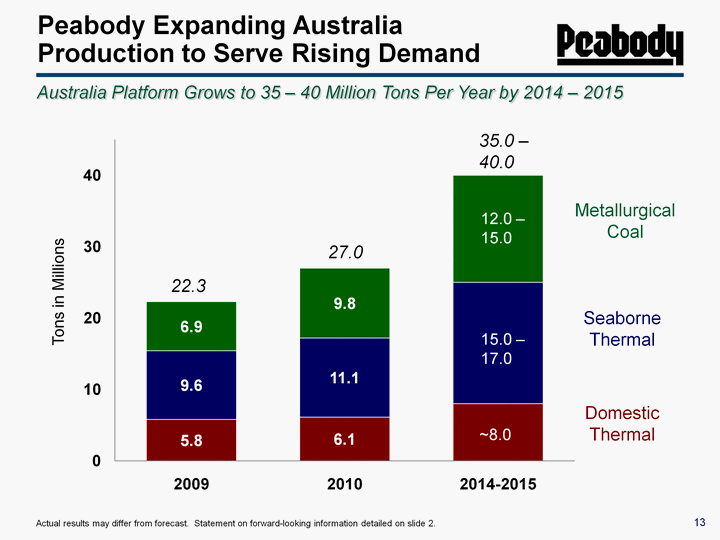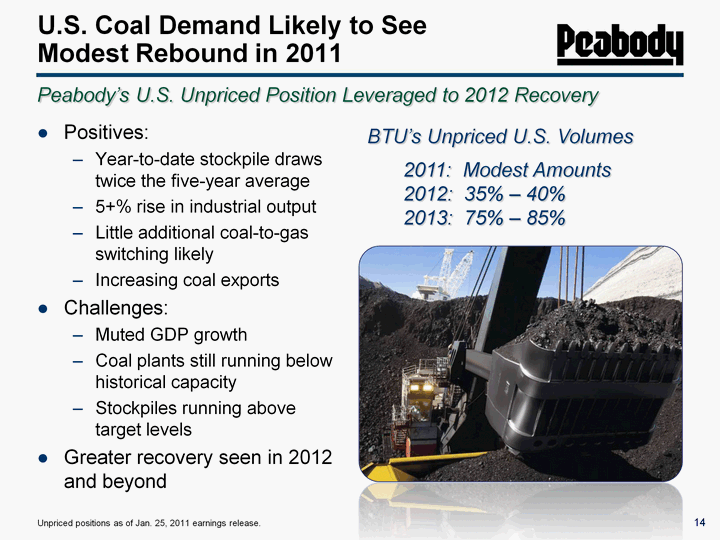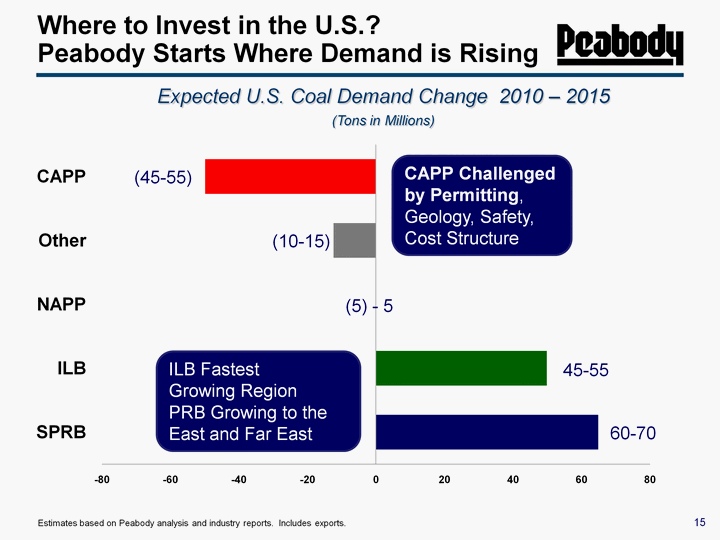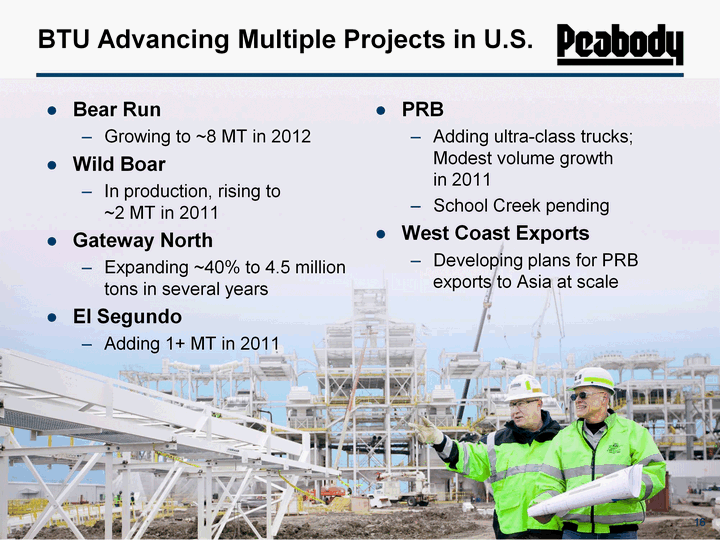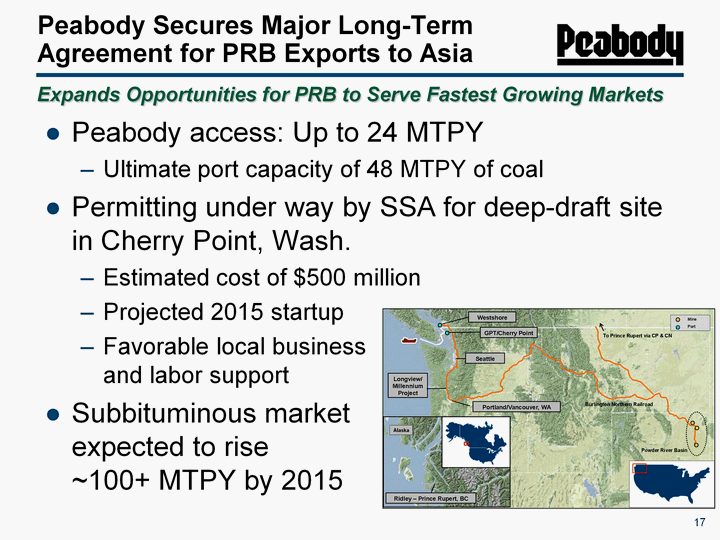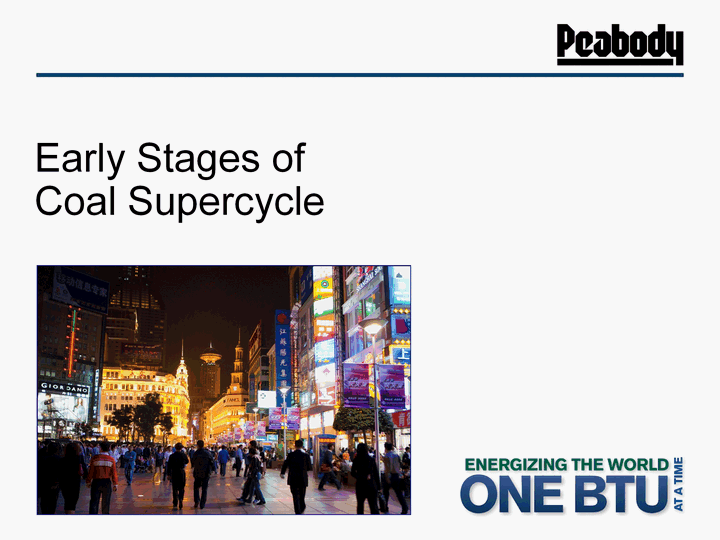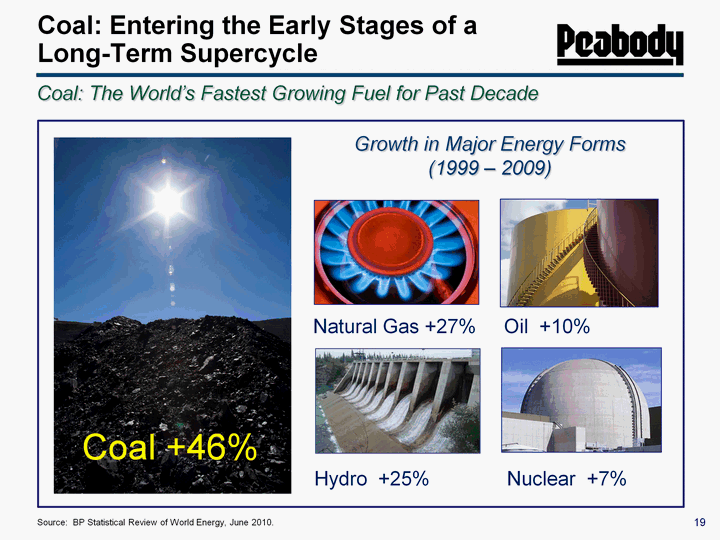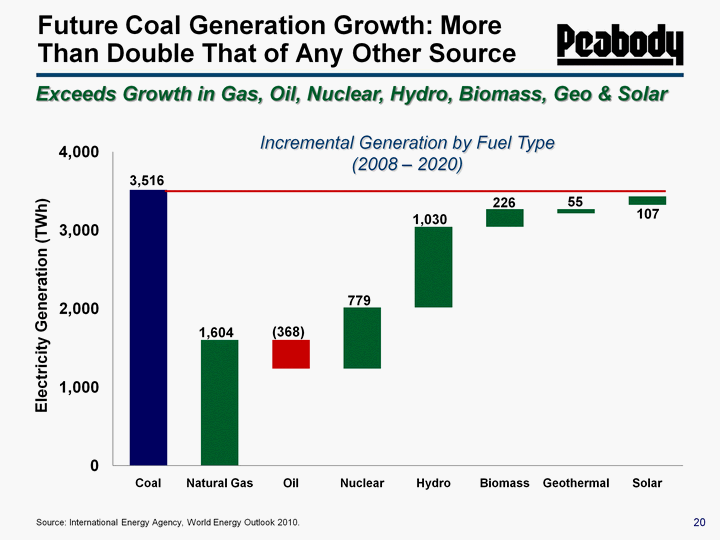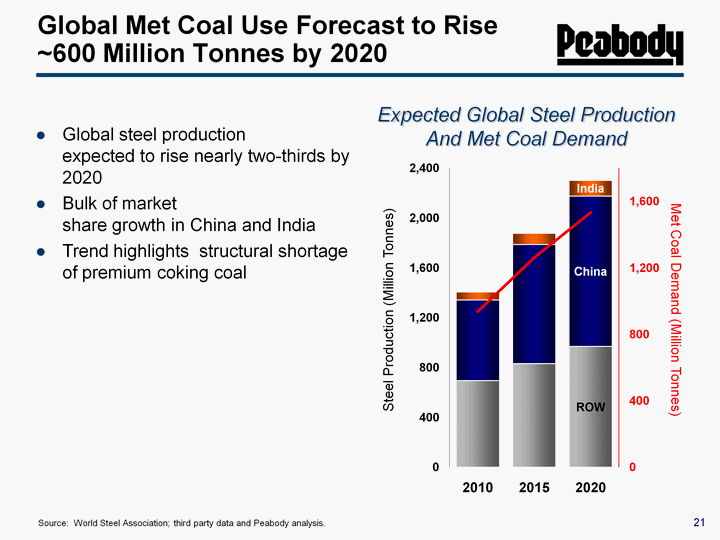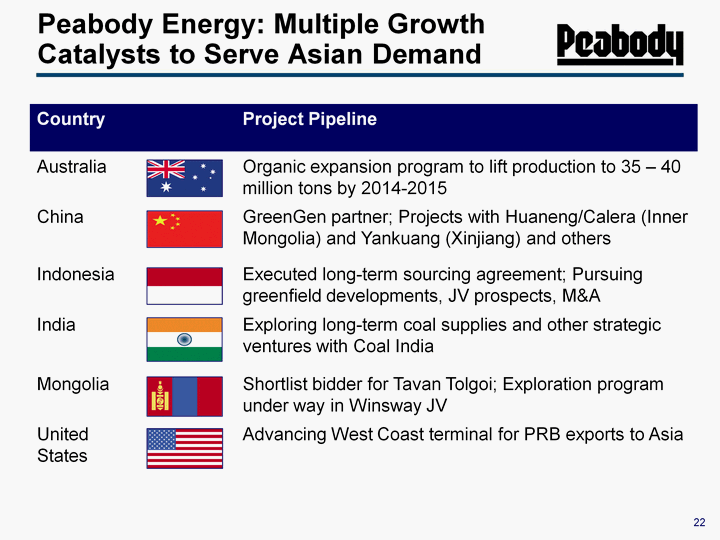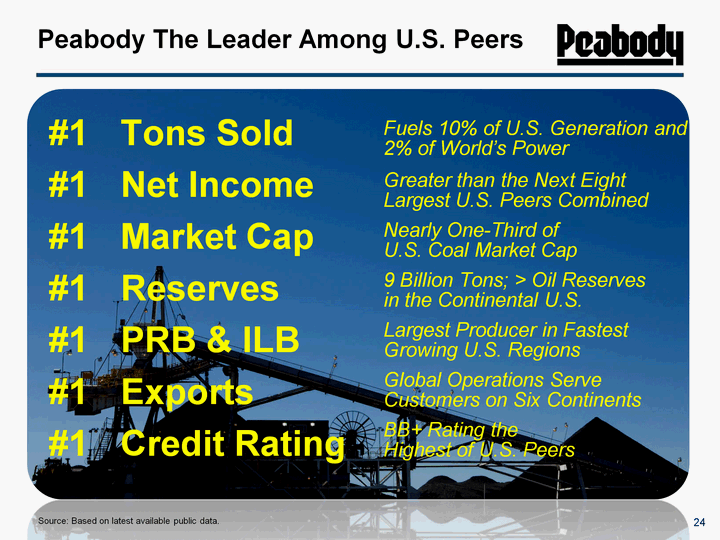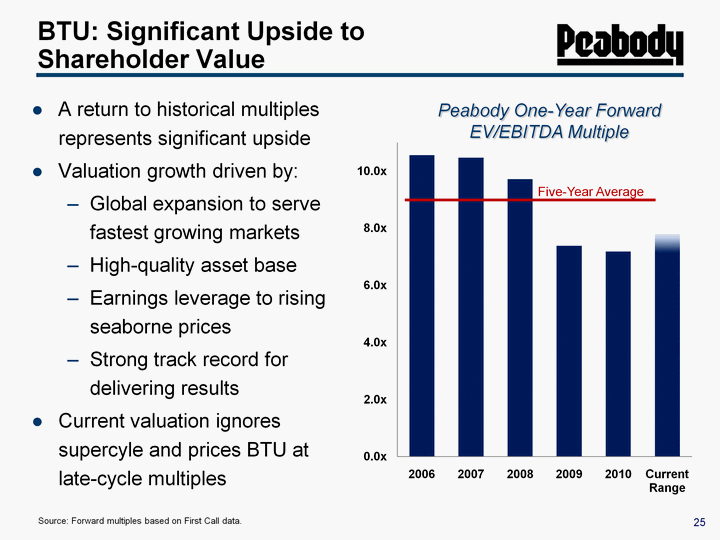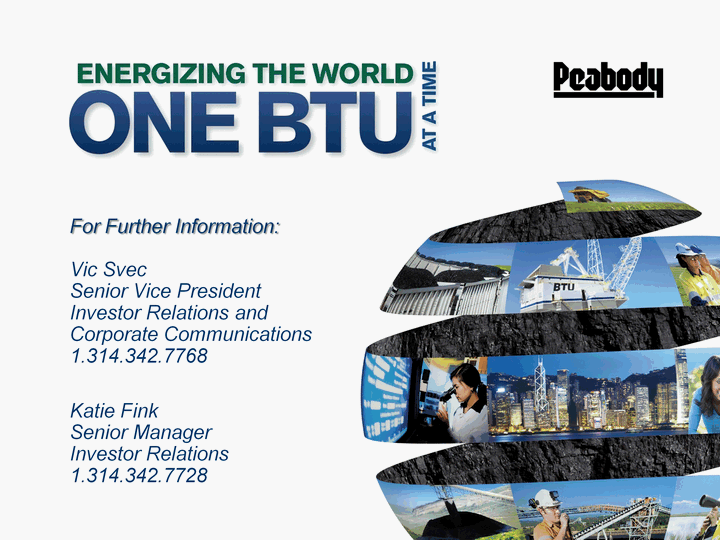8N@<78J$*ZAFG=>"F;V&58^$68J$#BD`9_$`9
M0D`94*`90B`?K"&QC1H1BF&IF_K^O-_AO-5[O96ZO:VA'[X@%/HA%2A`AND;
M'X#`#O3;#L3:"_Q;K*7`FM-ZP`F\K?4!!]):".Y@KM7:P!/V:KM_:FK-Y
MK\-9L)NYG(49`AJ[PRNJ'UR@J8T:%>2G!!I.9.0PH!"J<(3M7N3EI;J$XK`F
MT<"*Z!J0MASYEZJ5TA%.ZA&,B!&"A`OE6A'R@`O[W`#OR[
MT1M="NS^0`ZN61^&8`@&O-()/-,A7-,S7=/+&J[7VIJC&`[=;P'G45TA0R`HY6A?30+*3-AU($1,($9?
M+-$P9_PR)UZ8"`MV6@6LW,J-F[EOV@1`V0\L[X`A"H`@J
M@,R/NKWK_,[9^QW2&PC:VZF/(1!&`!^HNHK3(`6L(13,F\^9^AJNH1#P'.#S
MO*D+@>#WO!"4&@A@^`JXP`CB(`)@F`(:`1:`8-'UV]$=/<#CNIHQ':XMW>,O
MW=([O>1-OM/;NJ^/6+!9H=0A0=5AOH@='UN^!AG:G^C;H(A-K;.\#;
MJ;O):QT72/D)G@`71N$6L``+3G>"1IG)8^&4L=T$L,`'M/T6Z@';4WGI:QT5
MH!VGL8`,4$$94,$/4($0_,`)U-X)_.##@$Y_@FUKQ^QP?O@`2@C<:HD&%`^$+
M^B$4+A[C-=[166$(A*#2KUGT1__T3_^J`P$?1,#T*_WU89_`,=W29Y_28?_V
MJ;G!N]F(F[D)Y``(@@'58W[XFX?5S5GC][L0]EN_"YN#?L)DZ
MQ.U\X>O^_N/=S@5^\0V>_Q'?OP'BW;5"!(%<`U(("!`7H80,PMC)@B;X$#9'#6^
M4<$Y!U-Q8EQLDJ1`BCZ]573#Q'AO1$%50BVI?@"2>A4$;#H`!GB4U8"#A@4
M59@)MLU?"B[(8(,./@AAA!).Z&`JUC!F6(8:;JAA$QYZ*%F((HXH8F4FGNC5
M@9V%YB&+K#1A1VPRON;::PDAE%`AR7TD6VINO$/=;LDI],47;`SRA1NP4(`/
M#H%L(^2.'#5W348IL"&"&T,0$TT_H8B`3S`4B!!(**%0@`@MH8A7DWANNFD'
M33P!N%YZZ%TE0C#%B$!F(W&\Y,D7`5;D1B#D`#%(@00NFM7^4)>YD""%DDY*
M::667HIIIFO%X8L;.$C1!(<=@NJA%"26>&*JJGZU8JN;#3((#K%Z-AM',LYX
M:ZXZ%F200CMNI-`QQ[A03#'YN!#E1PK!Y(HU@2"*B#4XD/,%$%1*R1$U"N'`
M!BQ\IN!+*%[B8P4^9Y9[S#:J?.'2F^Z^&:<=4K1G)[WXB%"$'X.P4@P^@JX".$*ZL<$4(QX`7"!J,.8^4H5R.0HVG%%E^,<<8:4PC%A7)XR(H4GQD6
M*HA-2'9RB%^-F.H==SAPAQPQQRSS'5S=853..NO'\\ZP_@PT*X78U)&.MX=OSKD(BPH5ZS$4;TQZZ::?CGK%?)SBZ:HI2[:JB2Z[
M#//+#MPN!,Y"Z<-[[_H,];OO`^ZL,]"#N*',"/A!D
MX3"RZ0@T,*)AV#3QQ?8$2.+^'9]$[:[L;[3MMDWH,2`Q2D
M\1L%C8B0!GPHS!.0H(,5_B8%-N'$35Y@H.(Z9S@WB*1PC#M&$I(`@20X(0,A
M.,(1!+'^BA"X0@A8@J`).0^
MZZ$/@<([(.KC8541PIV,Z!/TY$P@RI%>LK#U/:8172<$4B
M/XE"]8#+&JJ(H2E/BT'"(1;RE*`-&I3DKTB=J2
M)[TA3:\C3YP2T>S@@B1P@0_>,`(?GFD$"%@#'X,XFQOAYX+^0##.&F@J$CE2
M8`TZ/.M=XR'G.UPP!#I*I!]F1(0J\LA'1)3)?Q0XQGC<0!K"$"9DAGG@)PGG
M-F_QCP[;($8J^D$(3&9R%1F0A!]@@:42/I(-$:4H1+M%T8QJ%()T\H4O2JG*
MD(ITI"2]2S2"@(5;'$,(.'RESFK9.US*=$"\Y.4@UJ:\8/:JF,>4GWAHT@4\$0\XK!!$"+,
M@WZX%W\>B=C$*G:QC-TH!7U!!RC^E'2RE*TL2>WACB#@XA:$<(-0.,.JK@!O
MEK:2&!GQ&/ML)CA;,*IV]G
M/<8@$!$-*$#B-]1XJWO=RY_#)C:^?+)"N1BGIV($(Q178$`[.ZV+-0=*SK$"IVN#;1C;&*_9NNL:[Q`.!+HQ"SYX`@K14$(6
MHA&!?D#^H!B^&,1,V)1<_"Q+)OB@`!W<("9?W$9DK(BK:!+H5?$`H\=XX=W<0$F;P@F&1AF-,\A2.@$`_XH"`0"/`$X3V*UGX
M`(%_R*,;5["'$?+FX#1(VKZ3MH*D+YV&.D,XL24$$P1*.@L\X($+;=&`J$EM
M60N(F@]M00(>D&#HM&1!U'B8Q5I"/>JZD``/)##+KGO=%ES3>MC$QD,G/(P7
M3[BC$UW`0PE40`AE9"`6(4!4K$`7%:G,M!)#J(2WO0T4;G>[V]_N=N%@'&,(
MSMBVLIUMO#ZBMG:;[!ZR*K@@CT8$-QH=*'^&_@`$@-9T9M@
MN(&;35X2'1A7-Q>0ALM?;F`#9P($_]F7;V=214N,0(-0)($<$I>SG-T@`DU;
MFA8``$`")"`!`.A!!1CHQ"RR8`1B(#4:GTHSI-.Q@
M!TE?NM*5SG2H1SWI#ZYPW%88TEVTW-9L>4'+E;#A(+0\"VU)0,LML!:OM_P9
M:XDY`.Q1EYA+P"QZ`,#"!([`@@<**?NVO+>05NUPTNL,87XA"PLGBB`5#P
M^#9208P(T,`>]H#2C]Y1&%8.@31=881LE-[E7JR.V8/0Q#@`7
MJY?VEJY@%-_D[RU&TC%MA7OHH.\M'P,:QJ`'-/3`$C6X`!H>8?X+G&`/)S@!
M#WBPC:3?XQZ2GK_]+TU_^^M__FFXQ]0K[6!TP``CE0M?AW<&:%DGT'+1T&HM
MAP=JT0!UIW>H=A;VT'(O8!?/``!L5Q9FEP!NH0;<)X(<^'=S,0M(,'@:(`_H
M(&JY@`NX,`HK$`+'X`>$<`M%``1ND"BZE!659WF9!X28)P2X%WI%:(2W\5,(
M%@M1U>%%V(,"Q3=3G4YU4C
M,!$,1@'^#X<&WP<`Y_<(
MZ`<,Y7S5'F%@D^\>)]C='F0<`8,<6J*B*E:6``,"`;!$-+5<#:J$$+6=V`'!L:-$)+1<&=I$%
M1F46&OB!;1&"`(`!%J",R\B,RAB+)1@768`!73`+L_`+2J`$&N`(>'`*.J`#
ML7`+MX`+L0".L=`!'=`V%Y970$K0"1A0`J*F`B\X"B^("T]0#[>`#TY`"(VI#$Z05H;E
MCG4UF9]B&#HACVPB>MCU&3\B+.$4`QH0`?80!__EA-'0`,`G<<=0B@R`"-*$
MA%Z&AN2P#8/@';"`)*F`P`#Z9XEIX"T,!DH.5E^6AGTF`0&1DDI:N8H(Z(H+
M&)>PF!8>&`\]L(%D219FIP=8^98NMZ`:,)=\T0#&-G@8@`=94(V#UPDVAP08
M@*(E$`0L@`6(F9A8X`/D>`M84(Z$`%9V95B*93B=5C@6!5$7U2W>LE@!Y2V@
M-#)=51X+1$[ET4]>("R0!0G]P`6&*043!$,`I1R?10*UM`/+IF=
MG8&=Y[%7_<>4F_B'.%F(X%"><+`%1HF(W>*"*H6!HH6T6!J)&`!%EH67*",M%H6T:",%%BK
MMUJ!LT`"&(""J%D!J?-`)>*`$N!H/7!!J)!"+OZ"@;=&+``!L9C&+`/`+
M\2"M#&H67$"+:>&LHC8+O&H6P4AV90&7QMAR&BH7]J",?N4)%N!J0=8661"K
MLYH6\^J6LP:M:)$%NZ8!K!8/WF`!L0BO%B"AN1JO=^$))5K^C200!-A8C18@
ML1:`C5W0">[@#MR(!(Z`!"R`"RL0@X4)@R?;`<7`F.'(64Y`"[30+XK%8!,V
M7T)*88PE7T5:I)TS,D=ZF5)@2-CU&!J)I%ZP3]'A!OBP#5<`!8%F!H.6G)Y`
M`P@I9!20`J+Q#A#1#T5RM?C4F5SX!4ZV7BZ``U:0"D@G76]Z('+:7204"EQ@
M"*R&"+"0IY\*"^XTDIX2J-G)"OW7B7-4`GRG!S[IJ#+0GC*P!4LP#![@#(:K
M"/-)GR?0`A`0#,$`)GE:+$$"!/W".)W;N94;#/Z9)Z#[N<%`!Z=;#%\90Z[:
MJJQ*%K,`H7LG`0]8%AK0YX`D8,*ULP07@F0MH@00&.`L.>!:V:ZUG$0TUP+S=EPO#6Q9R-XP8
MRJX`X*YQ@8H-,`L:J'=Z0+N\F(MZ)P$8(*%9T'(-\(HM=P)E80&QVW)Z@`'Q
M8'950!;7JXO[6G.X`AB$`0Z
M@`6$"7-Z4)CDJ,(S.DD^X,*$4$%.H`R/>0Q,=B\T:[,R.V%V-J16EW*'$V<9
M$C(^2W%RA;1>VUWX``/ZA@#/-&A*X7$0$`$0H`H-8+4VE(?O@$?S$0B-(3(G
MAA\NP)K^L%`]5H`(U)(2H:"WFR$:C-$$I&`%AA(-WN`):'HF@9`&?622<9`"
MF;&WKJ*'3ID&>%P,?:<'B>BHCSN?H+`%@-`"'O`)ABL#'P`(]`D('@`!D)"G
M>7JZUF`-@]`,X82ZGDL'Q7"Z=!`,2?!P=)`$IELLIUS*Q>((Q(!*K)L6MMR_
M?;<+AA:!`+`+%6B_9-G+OTP6>"""`\RK7G<"]0L`N\L'\,MWN\"6JJL6$/H,
M$JIU%1H/?`">Q%P6W4J^LQ"^@NN6'8B^9+&N;'&,ZPL7!4C`(EC`9\&6W/<"
MN#J+]\MWJIB]W!<$$-H#9#',:;'/N&L7LW`"(ZH&LEJ-76#^`;]P`D6&C1JL
M`4AP!?C:"23@:DC@:D&`!R`Z8J,`TH:)"U@PF#!8F.'H`R;K`S`ZCIQ%"RI'
MLS,+TW=F!0$U!'?8L[E7Q-$Q>HSQM<$@M5S0M'P`8$R"/JD``4FQ+OA@0\:1;0)^-;TM9PGA/0OM?3K5=/[@M,FYP:052RPXLG6D`3;(,6IT`!.Z`G]
ML"])FPK^V_!??!4(QX,#*$
M\1""S'NM\6"6J*9VUY[`+??/V`T`&'@6^US/9F$/QTO-:6$!+;>+K]MRO>97
M]I"N9J$$U&L6YHW.Z*T6QY@`NT#P!6_P!#_^W\,]!N6\W.U:
M%A;HR\S*K0[?WWK7[F4QW/%<%KC-W0-]%@T`GN).%]'P#$&`ET@PL1&L!.B@
M`JY-P8-'K[G@#>@:XD=F#[-0T1;0":XF:B>^C4$`PH[0#:>P`D\@`45OTH4)
MTO5`F.,HXS2:4C&*!4X`!*=0`A94Y5U``E3`]53@#BB``EV0!"@P]A<$"67>
MY.\E'59P!1_L",5`]A=4RDEP!<1P5%"0"@K'%2G```R@%%90*&W6)%P1"$NA
M"O<0&I]1Z(C@$^BR?.1P#.83MEO!DF0BDHU@6'44!TS5#RW!`/W``*D`$UVH
M,T61Z,1C/,4"]JL?]'AP!GJ-?G#^``J/^P&0VP*ZL`4*\`'54/NC;@@TT`EB
M0`:HP.-DX`=^\`W'S^/+O_QDP/RQ?@I.T`R[KNN<+08E8/5.0.S'+()@YU>L
M#0#_BQ;K[LL`77=JT.\`$`1>A_[G[ZV1I9Y-P80OMO>
MVA:]#!!!X@V,%P0``"X$+1P\$<]3O%D'9SF,E^6@$H(9XR$!,(8/P00`$F1\
M)E+CR7AJ#JYDV1)AQEP,,SZ,"``/Q5\`GJ$<^`+`+H(6`4@X"64,@!0@(@FBVQ&JFIDAYMRLP>"#JAHX\&NE0"/AKP]%-/
MA=(`)*8&BC1+E3K28U566]6#4Y@.RN*D:`[ZA=0@0/VT4PS:?+.B@W(YJ2:J
M3K+G($D+.LB>C';!E,N,\!@C@2H2&"47#/#02XD3U##"`B7"[&!BA`1!5\*)00PKGGGK#"
M"RWT!04JJ*"$$ED8>8418-H`)H$Q$C\*C4#0[B(_GC>QV4)T_XR**37]AL$U"?W-3H6``PX"E5
M1K7DZ"7^8`%HJ-EG`X6*H)C:=)75HVPB-=E3L4RU$T\:\.1_``90(_$C5$9J
M!8!;Q:,!)E#5_%95O^,)97W1.DCY-.*4+V5D(?8;2)T`@*C<18.!53"8!*I@
M`CWT`$RX.`,&?A$$OI!`"7A@P5W"A2Y\62!;?(B7/>1%+WLH00-<@-=:NJ`!
M$KCC%TBP0">Z<`6V(($P$-.!#LZ@`Q4DQC*064P5$#,*"21`C`EXP0$P-@\T
M9FPT'7--:T(FFY'5YQ@0\(0&3N$(EK6L93+[3AP-G2$`$T57R!9]:PSA=2@8@ON"`8H>A''`8!"WR$)S[^#MK:V"`!-DY"
M(14,4$4JHI$*"$`@%:J@`R000:$(04B7N^1EWO*&`B($[\^<\NG2F@```>!I/"$SP<9'E\
M.,KZ(('ZL>1/!/&)G#2RP3TII8);.N"HXI%0Y6D$I1CA
M@YG$1Q#MN<0E:K@?24I5E51-!%IIRI0!;340\,G4)<"3X$DN-3V4L*E2&0F)
MI,ZG4V@U0`73DL`S2EA5/9A``GK^J(=63:!5A4F`!9U00A9N6%8CS**&\)+7
MO.Q!`^O)K'I\H$%=N>`6=VC`';E00159$`1Y8$`%CD!!@HQP"ERL8!29B<46
M'[887!QL8F$,QP,$<`"-S4`.JVF"&T$F!_O4![0XL`8CNQ&$?;4,C[LA00QB
MX$>8:0`%=.B:"0(LH]`@.&^$"!O]G-#V3N!I^+@B%RD`-H
MN(,O5-#^)Q5F-X,9>,A*'FI%AUL1A`X'(0BGX`O+])E$@*98Q?'XG>\$:M"J
MH'1Y\7#6H]@D+`S2%'PA;4K\6C(&[6VT)]O3B!(.PF.-%,^"6:H"``3B/H]F
M1"CB,S(`9D6J,9!)R[O@<5-MFJSQ'<2D7"(@K7X:CP-*8,MDNG)1D]R1`FI$
MJ1KI%0"\$;RA`(I+.7G5JJYJ,%SHP:JO>D:?2UB/'KB#+4JP@#>R`$,:Q(LN
MT9B%.TI0@RJ3BY,!Z<`T,001>ZT$;-
MM8$.;;C6YO"-0=^08.$PO/`780@'"/!`!370=,5+WYU`J])B/"\5)<4[7CQ(
MU7T0FTO$R0_%DE56/>$D_^S8S`@=`]@5IRU<4;<'%'$"XZAK!*H!ZO2HS!2&A"
M7*CP,`G8/605YNK(@M$$#]/B"E9P,.2O2JMB)($WE!`&$+3"V*QI0GU>4WT<
M='9K;E`:%!P1!!Z$(09R85EJ9]9:X$P[.`*CPR`8";517@@'(AC;;[?3#SI@
M;00I4,4VR`$+*R"0+Z@/3,(M?9@N',"'2((`.J"#;=@&[S(N"B"').B'YB`D
M5;`"@TLX#D0OADL!%``<63`-^1K!1<`LS+J`CB@1:;H1;P(`>3`#82BY#T"Y
M#XB":KC^00>K'&[BAAO8A&/B!V*Z!")$!R(DPE[@AR.\!)L3)F5J`T8@.HIB
M.BK,$JA[NC-Y"*SP'I1P%BZDDZ/HA@VZ,I1J@)B0.C0[B!ZH.H*@.R&#,CU3
MH$/A"6>!NRUIGC%H@"Z8"I2($QJK.XTP"#O4DK\SE9L*,P`@/"TQ/+8[,PQ"
M0RQI/((@%I0`'S!SGYTHGAG;$GO8*A3Z/%!TE:UZE:U*@%$D11-0`24P`G30
M`22@@7GI!!;PLRJH%FHQ&&IQM5JL15/T(A*RQ5W$A5K$Q
MN(2A[`6C-,IB0LJDO`1D$D(BP*\JC$H7(ZBIQ(B'0"D2J$0UU`AG.8&$BK(-
MZH22<+N!.)\KBSSF.8@W[*@X_$,UT0BZ&\0LH3L+R`FDTHBKL[*GR,J,:!XG
MXXEH^`42**!"C(?`PRDQPQU&]"G^Q--"A>()$C@!#9@321R(/GF?-SO$KUL4
M-GF&MM2?5VD3!FH5K5*^,>@\@]&JV]NJU&2!&=(!>^`")0@"J^J!9WB&6GP5
M$A*TR+(]7#1%$ZJ67[2]7@RCX/0B,4J845"!4#.U*LBJSOLK-1BL>/@%9:"/
M:\S.[1LO+B"";(B!;&`$<42"Q2"2L#(#OW0#AT"C131C3POAD.!$B0-)21)DA0`B\,H%'H$
M!A\%5+UQ$]D
M%<]C33UHA5SH`BB8A1H((ZM*@-LD3HSJ`5PMH=7T(EX=/=S\,^;D180Y#!;(
MHEIK$PE0@2MPB/ZADYJI1NVT1C=(#WL`Q^\DSW)$AW;05FW^+4_T=*WU')A4
M"`5("`4K2-=@L!IV;3@ZH(%XX`,SX`,^Z((N((9H\`9#L`L:X*VO&9M[2(,T
M$`$Y$)OY\YDKZ(?X/+=`4`5,PB1:"H;D@A`0!5&*M=@1+5&&HP,J*,%EVH03
M9%$6;0,T@+W$^2\X@(,+0`,%(((<@`=>^,%JP`9LR,&(&SXP,+\-*1XA+I.0A,/8F2.(I+W$P`4(,L
MZ!0N$,M@8:J;.E24N%1P01?#-=S^GEI,@CB@Q?O#-L$#>_"4:"B>1`P*F3B)
MN-P%LIJ%5#F(R=.(.K53+.$#"4"ATOPJ/=@\4>TSTS1=45U5@\D%(\`#:BFT
M5TD`5R-.L#(!%+SJ,5G.,SA`U/5@,+.@&R\R"4["&
M09#6:=T95E#`N'`&(D"'>?6$;;@"\;T"MX@`MT`79B%+.#/
M>S2NKTD#L-D&8J`!,UBP&^A?/C`%8?`&&C"%/%@Y,U`ELNFD4&`X'"@/^6`#
M?.@'8M@&1*C(L6F$>V0`M]%01-"EBOU@$+98$D6XAOO(TQ"`-<@!D!59D56`
M,7@!4&C^`V20`1.)@C8H@W-8@RB`65[(@9JMV4/(24/`P9(+X@+NA23E!R5=
MXEYXTB
M*(,RR.EQ*H`"H!'*&6(B[1@
MB3,*.@@_AHB5F&,^*..5T(,3\(3SXGT(.,,!/^HIC*06Z)0G9F"S=TE4<,QEEY3,!4A5EU!;E5RE-UH3E50%.
M0R.A,S`AT3[.WOPS4[S58;0]XNV*XC@B#5""+N@$),"`PL`"%G"$ODIF$K#7
M:ZM>Z9YNZL:!%&``'HF!KXB!$TB=4R`$+""$1,B%%<@`XUN!)WB"\WX"']@,
M+-CFU1&#?W"$;N@&")@%\360`R$&+J`K>0T=3X@&):""]FP'*L@",[@K;\@#
M>34#"PR&!"30=,4'A8::5OH"A/R:"@ZNWT*$BZQ8D`;Q$/_0CRYQ$S_Q$A\"
M$4@!.G#^!_G:A$U8@S1"HP,`:FPX!'^H<1O7A'7PAS_@A4CHWQP`\IS.@:"N
MAA[$P:*^P2@XA!P8)B4^2J--4HF+N*=&(].0N*BNTEE0F<76B"Z76I2@`1+X
MA1I0`R28XXS@`Y4I%H)H`'Z1[(_"@%P0"PW(%#C'`Z?="SD_"1TZ<_Y94Y7I
MJ3M4F;PN%)5!@K\6U%F@\QH0S$A%'CQP[5*(9NF`4-*&X\.($@J`$L\*T`205'R`44((<'
MW`86B(4,^8?:<0)40(7$NH7V3N_TSH588._V?F_Q9B<2FQD-$.=8"M]LMPL+
M,`(:$.!MB#>G*8\4"$CSD"2!HX![`*4+?9JQ404VZ-"/]F@V*'$21W&:KWF9
M_VA\,&$3Y`20G0=DH%F6+@!_T`1-^`,F^(.;9@)_&/I(4`=UN&>8U>E(*`,:
M*0!NB@)`N$D:_`!A$(9%:&*,D;AYB+BQOZ\S*HVQEX4M7WNV;WNW?WNXW_(&
M&)C/O,P\[J"CD'4M,8C43%550>W^!_H\%,(H4S[MU`5%4C7%R8)EP(?)X2.A
M9Q"CU2PT5F8A:J&68(F+4Y`'>?AF<;97",A3#=BT*B*#?$@D
MZ3YWZL:')-``X7`$%U(#2P`#M8T'6,)N=%`">[#`5(`"".@&G#E^YX@#*#B%
MPKHN!H@`AK2`XT"!?P#X=AKX6[B%QM*,]N[^[<>"PL"#*^B"T850/6!@;B:0``$S(0JKH+Q@"-LA__=?_$L]_F_]_@!`A<*!`?'2HR%JT
M:-XB3N?6S)N'[1"VBIJ88&2RKL`?C0K@J>/#1QT\7I%.1HI2K4"!0U%45OL@
M4R:@*-S^./7JM6:1``&+UNS\J7#H0H7S9,V+IW0ITZ9.GT*-*G4JU:I6KV+-
MJG4KUZY>OX(-RP<`@!I/D9#M]!0/60U7K^B1H&>N'A-CXM*UJ_>N!`DF3/@%
M8*)N7+]C_-*M(F',F&=Z',]EW%="CQY57A0>K'BRA"JX$B3`]3D!9PFCL)0(
MB#$P8B15'"Y<^J5*GTI5'!IQXD!I$-]3`V)F$'CR
MA``_%"AQV#/77#177`$!!-V@($\)IY30BB/=E(`%!#1``,G^-HCT0PX#%`02
MB"I?!,+A%R-^04$HD*@""QLKLMBBBR\*Q`9!,])($#[NR-)31`>L<B0
MUV`F$"J78'4Q9M=A=0$6&%YR;>;87V-@$82GN>CP3&B.*5:87W8]-EAI?6TV
MF6%/GIAP`4",3#A7=*&-'^731&<&&&&7R$J0F9?RQ3D:1\,($/"=A
M%-*3O-R`$B]E%*"E2X=X.9-,+T4A`R)_SB*0LJG*$"%BJH4)D*.NC`0BNMG(*L:UV@
MGKIK[N#^T4H09["PBPH,GH)!)YZ<(`$>W>"!`JUT"-'L<,$/X@L=Q\J#01AX
MQ*!!%EQ`H92AWNX!C;G>8!^--]3-8H_#T!CBG3U\>'^ND^=B[V^_?-`@4OOL
MQANO)][&UT#[WHAD1@[>F&**/49L(QB0H``^1F0%(8@`$>M!A!4HP*(`C"R"
M$G11R42`#WP@)$<^F<2HO:%-,%5XA@G^"B>!9U0A-_;@
M`@WJV)]_[459"'
M"HYEFQ-H``$GB,4A43";4."#>,419;2.A8%3J"$7EC#;"RQA"35D(1Z>X`.]
M^"!+8D0CE\0@!VVV08PN].4P/9A%#-#P@@M\G01"C0H
M@`.<@X,'\$=%6(*1$*XPCRB,H0Q%\L*@G807O(A"`2;R$BT!8DLT\8`'#!&%
MH&!T)VO021$7L;(#-#&D(ATI24O^6A4NX&$7SY!``FJ`!%LVQ1.Y8"D&#&65
M5&A`+G];E-WZHA>],0:-=M.;GZHP&,%P<3*#PD(T$):>.*2"&+B,P!40B0)'
M]*H$6M6!"EB@!@"PH`LD<,U828!5#`1!=%4(@F@P4`44Z.`4[L""!E3`.UEA
M(`OV`)5L(`"#:"`"8\$;['!2D`3DG2"5JS0;:>82#5GR*Q[X\41S^F%9]#"`
M'*GHA@EP@8).)_KPGMNWR3VQK&X=<&L$4
MX^1#`U1Q#U@(86,CJA@%^M'.$CG011"<)W-!1@<-RL)E%.D@E?C9D8TP01W<
MDNR3,`+^M)&\$&?BA4<.#&$(:*"7HOMH&DV4X`$9N$0A:9JO?'?202`NPJ3Z
MW2]_^PLVFTH%P(>B%@L:M9BY*+4O8-P;%.521K[(Q6Y[,^.I]+""W74#05?%
M@SQ.X>$/>U@>\L!#ZT`7!#U$[C:,!-89<#'31N(!%W@XA0YF@8M9G,`1)&#!
M=%"@A!/0(`MX<(01KL"P5%P,8TI6@P$3X`&J.L!%EG]1A<>Z5E_ZRA>VH)`*.=^Q/'S0SY[C
M@(@O!",8%/CSB"A0(HXA@F,/;"ZC078C#6KA`,A`1LP.P!+^EG1$2&50QU(&
MJD)UJ..@46+"#P0)<Z$P$E
MO,`(2I@6%V!0+3\+`6-#P!BT4E",A].A&(B01Q@3@(:+`^`,7=@RQ[W<9564
MP,*CT`,65*&?(-2C"_&``B1I$`^V7J?.>,:6?/B5KYG/1R2>2$4HTE!H$0CZ
M"Y`(D:%300$5!2#I2E_ZTMF@]!7^);W1+YI!.,(A`"WX9-(4N32FF5``)DE6
M'660(1.`!NKPFL0D+S17+J.QCU1#8Q$%R`9%9=""'.!]$1WL"=_+Y#*^"P#8
M@A\\X0OOE2XL"`O;,,+K<"$7ORAX;UM,*JM&@8L>8"%TN;AVML50.G"/F,2B
MYW#M&)2:5J32-[U#030TD``3C`(/\_84!G"A`1:000.XV$80R)`%'1!#'BA@
M/`U.@$MR=:(&](L&%YH*GU"D8`C2QQ@L+FB0AQ?C&#I(P$J5+8%6;,/D'#<4
M93UN654$P00EB$8K]-`-_+1"`MO`#BZP8"BV`%8N"B0=!R21`=@`#679W+
M*,0-^8,_K`.5,`&5C-T-J`,O:`()E9T+A1HO[$Q"E=JYF$$TY*`'M$`+_(0,
M$$$+M-HAB),P!-$\"`#>24W?+83A.>$30J'A>8(\!$$)](`\T``7.()H0!(N
MC`)G>,;G;%XKD$$5:A6(H2$:@AZ)B=@I>4HK@(X:A,8O6,*4M:$\&`$(=`8+
M=,(9;`-=U0`+7`$N)`$28($1L$`WS$()T(!US$(WV$,GQ`$Q#"`/M((W=,*X
M"$QL!8+"+9P(-`(%-$(CA$(2),$_E(`&6$"NF!4*,$`$<,'^^)&?^:&'*NB`
M"6@`%]2`":#`RIV!!#P6RXU"-`02%D2/:^7'GO'+O>P?_P7@'=D##G)!!(2"
M`(6"%5@!!,0!`Q`#%)!#`247!HKC.)*C!58@BU"!%F#=`_B$?)T#D5R$1OQ!
M0W4$016`0BE`#AP4$3!"28C7#>0`-/1@#T;!3`#%)[S7![1`%.@C)_C$&LC"
M)2"`-ZP!$`%11`1>%,9#`]B#$EB`&0C8$7E"-"B!,VGD23IA-U1A$*`-"U@`
M6N`>&8S.Z'B*5MFDI^"D&=KD&6+;*6%;:E@.%KC.+DB`C/6`":"5";0"$EA9
M+HY+*D3#"XB&(YQ`*NH;+CB"(:;^0JQD02M`P>[8`Q)X`A)H3Q:X2_M80A`H
M`0;DHGG`1QQ800K@PY*)0(>D02!`@"GBP2Q$%252%0/#I"!1Z0O(-"EDT
M1A`\UA&10!KY"4RAY'KZ&A?@)!Y4`5DLA@H$@>O4Y$UJ54[B)$_R)$["H>N<
MFP0$@1K^8`8NN,,K$.4IZ!X+*$$-Q%L-`(`*1`,QC`<"Z%[]18,.=,$)*"(N
M1$`0X`$7M((1:(`[0($\<($%6``?S`(4F*4V><,NZ)414"@76$N*I(`(#($(
M+)F2T8&%=`'SH0<-$$,$-``"^,MDY81P%L$55BE4
M$8.5QD$\A`$`O(`&,("2;J;_\4$TA$=410,>^`:4T8$.FH$14``"]`,;P()L
MXFF>)ATL)($]2G025=$1O9I>HN1"4F!#0W,`-(4USSH3+<$(.
M?4`U%*0PY``_"(`W6),]:,,2`MX36D`"1-&I`@`&A,W81)'^'H0D>\*J?FG`
MM6T#"9R!&>FG3NXD4+[A&[)`+H!*#^!"*A4H!N3""Y@`"Y"`&EC"6[G#+]2`
M"EQ!C*'`+/1`"2@!&@!`$*0"C1(#'R`!+K"`!B@!&41#$+CG*6QE-,R"&(RE
M7IFH6=K#%4"!-\P/PEB`&J2F$3`?,;P'%!`0/@S$$%C?7&+,@71#M2!,_4#6
M8&[99:U'EOJ2]"C%E::'DZJ"859I*@!F.Z4"`G3"&%P`"M#K9)%I9[X6#!A9
M-*1"95U!'!@(5!;,D:;'%R0=*>AIGN+LSEH@*=BI.Z@)$E;-.7!"#+A#:\R"
M(>3`//K#H6H"2_#"V4')J$')"[7^0#5$JM)\0`%4)#)HK2&@RQX`9E3%0$^`
MX-4Y(0E(42Y@`!+@01`4#ED$`=B\`%F\@-M24:SJ;4E%@^BT@@;01A><`KKE
M)%">7GVR0.BLF;CN`K*J6QT"`-L2J!X@P;/N0@)T`1+0F`YLPR^<@`XX0A;T
MGA'@`5.%P5W@0<$0`Y'6@`[@033(2A8X`A>P@';DR>ZP*!24)`U$@R<8`13D
MX,[1@"?,0A"8@1)HHK_"1S\(+(TLW,+A@X%$0'L`X/A-%@T\IB=D+,9&+!00
M0S_@!S-2J<9Z+):VTY5FK"5G$Q@&4-FRI\(%*((W65L-]>6V7M`#8?F\_Z&`,/(`ZSK``M('A
M*0'9_()Z2@\&D`T)?(VI/L/>$O%^!4%E,-(IS$(7%&\@ADX-]`!7)<`9Y`)1
MZH$:[,*=G`$=)H`>8,`)@$!HD,`7]P"/G4(87.LL>*X*=($&@&@K$,,LY$*0
M!H$8T,`%C`$81,"XD(LWA,%8<<$IT$`GQ+$.T(`27$$#N`/O&H$G/`\QCF2W
MTH#]3/+R\,$O=`$EWAE\,$#SSLCSRB4$,`!L.2/Y<9R[I`+^OYCO^>)2]OX+
ME#MF92/\2!DBH%E:YR.\TO_7:9AC"`*E#+>Q17(`PP`S-S
M,SOS,R-P,/CI`T3P*10#"D0+KER!!43!1HQ00T&MSQS4"^6!&9B"]D`#<\:$
MTB##`41$E72)(3A'/X`',91MWP%1X35`&L4-5+"%GP#*UGB"MNZ"+!7Q08=4
M5")Q6K7"+#`EJ\R4@+)1"=2`V^@`%R>`(_S"*SQ#+I"`ITA`L?W"+]@>"7B8
M#EC`&%>A$6#F":"`/<0`'J0".AB?!:#!&`3!585N`T!.%N22!O`!"D`!"8R;
M$D"!/9!`D+6/,^%/`W`!`F2!?&3^(11T@HR2P!5H'Y
M<.1.Q9T``!Y(161A!7$[A2>\34$/=T!3!7U$!7V\:H`Q]U3OB&`:PP"E$
MPPG@@1K^.((]Z/<D("WQ``LND,7-,`)H,$%)*X.M$)Z=`(-7$$J@(L1
MS((GG()>9<%(?JL%0,'B>(O]\-:&I\)4(X$$)+4FDL=[!`)7TTB.&LC+PH?Z
MT$P*1#N\O>T(7C$$)M'4#T*]?6Y9?;ZQAMFP$W&H/1`-S8$B^.`>`V%:4
MG^\D$@,)P.+X^$0`T5.0]'8`6<,.9.@>UX%(6Q``_J$D^
M#YXGQ*T]3$4G/(,:S,)3)-\S',8+8``/*T54OH!:*$$N:/K^,]2`$C!%)YB-
M>)K-+C"W!;#57"2`&J"Z4_Q"F,;#"3A&#YP`@/&)2HV!,>6)4UB`V5RZ')=Z
M+EA`5.1K%^M!#_R"I#^%$LBAK*O!LF-WUU@`:#V#$LP"'O1`$)S`WCR##J`Q
M%N"!"L2"([3W,]#;*]3`&;AQ$+R`$@?!+^S"L("H(*KQC$7#AB)!+B+!+VB`
M$="`*C:`$D0X%R#3":B`X+2")UB`$GC"A+$A5'?T'*-7(0*2`A=!SN]#X^#7`'N_9*I?U%8R!&B#IDLH+
MQ*)'Q)IO;45`@55!%U#`-C"`]'#^[#:$@FQH^:T8B"D^W#&4@!-H?3>$1/N8
M"WZ(9BA2@)>'>=D_,PRPS!K8)C\P`IHG@1.,0CW4@Q[<@ACD0`S>@"&@`Q*@
MP[W$`?EP+,M6_`K$0B[(PSZH5P2\W9_S`Q`)`!'P001$0'/LL50I.C_T@M[Q
M!.%E@=UV12"AJI^X!5-8`)ZH+:K^PE*,>^C#E"<$0>A';DC>"0G\0A05BE*L
M;^A+0*TO!:M*3N@+=TSE0NB/0=[*TE>%_MQF^]8@0=V>@!*0`.JX@]L\0P\@
M@1I@Y0E$TH'&^[*J@0H@02?D@AIHZ-N.=!:<4ABX`TN?`!)8@#W@0?B+1W<[
M$[L.(#K^*$$#S,(C``-)DX8C`(2G65=21>,RRY,&&A9F+83"QP(4;_8:>.-C
M+YHG(Y[LV?-$PUXJ>[MTS)IE!&4<&G%40<(G`F9,F?A"78E&#$H<*%`:>/+I
M"0K%GPT0(/"D"FG25)ZRO/C%QPP?3_&@K+![UVY='WMOQ4+AS1`?)>@,D1`C1DDTK8U(-7;\
M&')DR9,I/T9$14!F68L$,"IQ2AZ6>O7TV(6+Y\:-/-Z47.F&)X*G"#12$2-F
MA$LJ+CIR_>NCI%LW"_LB6/#0(L(1ITV]%R\.O^M691]GC;N7?W
M_AU\>/'CR7-'`@#`B?+A[>E!#^!%C5WNT6OHG@5]`O0]:M2@#T")[9"00(+W
M"$R@@>UJ>(^_&EX8`[U=IN+N!0!ZB#`7"9#83@D#^ZOAF?<"Y&Z6_-"+;Q<3
MWLO"NUT8[*]`]$:,QY,*`1@C/@??RV6]'GW\$<@@A>PQFB#&Z$&)+C0@X8I.
MGI$@@2#PV"4(=VI@00,U?E'!'3QR42,7"WY1HP8,E`CBA!-F.1,/)**9Y808
ME*#A"@PZR8(�[0P`C!KH`BFDZB:2",1WC(\)E13C$"`RFA:(T/#1J8)1HC
M+.!("8AH@(@+@QK(*`LN^+B-"PO^$L"C"RYPLVHE5:R0"5:8:-KF"F)4BD.G
MJ3X-]2=/C/*))5QU@B(>;R[(!H&HC)HEC#!.*<$))Q)!!15"K+V%'GKV\H$N
M'[#0HQY'("`D6C^P(`25:*.EA99BDD@"`@BV"264L!B(AH$L#/%F-6_,,`2=
M++SQAARM*CL8X80=VV$<631S6)9?0C.!M!5&>X*>6RSPQH+H(+A"'B0FU<`3
M8FHS(ZIL@NBF/R64V`?F?5H`A)L#B.@TNN>B,8,+,Z+A(P=9L%N#GR&-/OJ[
M$^H;TL9=HN&N`:5OY(([_-"38$8^%@2@ANU\X@/"%WX2$+U<[.G.'C70PZ`[
M&_6P8+O^!A)LP#T].IF0QD[J3G"[$M%[!N[MN+`QB.Y(N#KP>!KX)3_NI%;C
M;.[LV9H$I"V_''/,/2'!134UT*`+"_S#105'@F"AFQ-J0,&=5X+(918MU="@
MDU=^.2$")$Y!0@-BD#BADRNX0"(,0;GH!(-9N!C>3!H.&E2)6:`PPY(+:NB!
M0!6V.;,3/!+"*"(EH!#8$V_ZM("/3AO(`@H:LO`$'2.,*!#(`.#+IQA>+^7,$"VS!)<#30
MC<^1@`1*`&(GT-$%='1B22B`1"-VH#`G/G%AI`B&PS*3&2V$(0C@HMAH+N8#
M,M!"'DGHQL>Z$09#F.%L4('*#=01@Q?D`@XG\,`P]LB]<"W>-B(;7B+!P9N=,D%.A(`>)BDW\80.>YPX43="5$MOV,C%H$-
M`(43)7=<)`%5)A*9R4PD%S!P)/Q]S@*=2,`+=(`$).0"#UDZQ3;4<"@2("$<
M)\!#-$Z@)0UDX1<80$R$`U[7,JB?&B(/;(@F(_0A@MJ
MT$$69L$'E*1"6/WX7ZQ"$0=;Z<0>2KA43Q2XG:+$X0J0*,$M^K(M']P"!&$@
M@B'R8(H][`N=G5#"-FA%CN)!'
M"?#PU:\"$:U#1$(0?C&F7YSB!*#91A.;"$6[)FP'5J!$%07P@,ZP@(OU,,$6
M*5:7)_B@"J*P@!*;+*_^9_LPQ":RTXM>*!.VW=G:C'[$.``DKCN>*-`S)F2U%X"G0L:$6MBZ
M4Z(QF-([N`3`+"B$GJ=YYT*G$,\B?]LW]'3M._IY!G>B@9["'3,+9DK0X?0@
MGN[>-K;I56^0-&"),2!!"9^KX0F>`8(@=(&M&L!B-TCPBA-@P`)L/<$58O<+
M$D2#!+]`0J@Z\8L8,/@$).BH$L*P3AIT(@B=L`<4+!!0(Y!@(X4:DP2J(($K
M>"((;[*H^-#!X0EOZGU9>)\2B&&/D@[PHI[@`@U`4H-3R)@&*.&Q2A@`"UC`
MY,BQ@@4BOM*I"+J)6`BP*3&*`2UE'.$((0BA"`F1B%-8!"K^AD!".Y`PBS%U
MHA,[Y.'GEI161[B#!/(L01#4D`6<6``)7DTK'C"05C3_&="=<,<)VIHF#.0S
M%/?805WO^D2Z-H;1C]G!%V80CBH>0!9::$5@.3V7%8QB%%7P`3IR<(@"E($7
M-T!@:E@=!57_B[.''F,$,.BCK%!?0D8T6$'(-:UBO,H.`'N8&*;C'
MY([:QD`U2J)'/=]Q42FAYI[J;D=I8[A=FKB=)B,!@&W;J1"UNP-,IVR;VVV]
M$+G])LOO7$@"W.D$(\FC-CV@N]LG*#8`-C1L?_^[.V;`0Q4N@(Y9=*$+5W!'
M#[ZD`3RH`7]JD#!;?S&+_L:IGFK^",/&PA`G2AVZ$UV(ACR2=T!WA.$D-`C#
M+^9$@\0TP`+H6)XEP."(&J#A&2HHB`XB^*B=D>RA,6W`:`6"/B4XV1,9\<:@
M]@>1,\RB8ZJ2'PU400-$&!GK1F8I5(\N/Z_%`P%Q@$`^"$&/%83`"4G8!@7(
M8<-H],-DIIX9,?2JM@4<"'@+=
M>#23``^W.P4&3N&(+RQZT8V&8N8Q3]?,DV('C4C"9C23&1`,EM.CL=A=?'`L
M)FBB``5@0JKYH(Y(L#H'>C1#'J(0ZUA[8!_`-T4T8I8%E,%,X`KX!"<*.0^`
M(Q(/Z.G^A)#T<^WO1-^2V[%:N%L$`'(KSMK=4=M[R%]^`*BAN<+MSGG-W_[(
M^:W?T`7`=K>#_>>.QT7M-W^TG]__]%I`#9XA"$@@!D`G"UK!$C```ZY`#=Q$
M`;.@$_8.H,8$#[(``']!4&9!2D1."7X!#XY."4X`"2R`!J(!`^"+G:1D@-Z$
M&/Y)?"S@!50`#R1`#_2@%>"G%8S@3SIAM/"D$\;G4AA"HPP"5+A@?9C"")>'
M#V*@%3H%"E!"?E(A%53AZK+."F&"#?!!%78B'NAG.W"*%JK%#]3N"N+`5Q`@
M%98$SH!H\?"`SOHC&I0@F]RP!A0,#X@@!F(@\!RO$TZ@!,;^!';X8.CXL!.L
M*=`^!QT^Y\_\4![B*@D4[?,T[V`P#_0ZSQ([[Q[N`0:$!F($0!9>00*V:#10
M3[#J807T(!?:P1ERX`8V`1MFCXWB8;)P3]40*,RBH!H`0?A0AOC^B&>RP!3X
MP!"`(1M`81&&QO\N1P/00Y+*@P\^R?J\`_M&9/O`8]I,*9.LST;TC_QV(?V.
MJ4.XL?PN"?[`XT+H+Q[VS9;$0S_$<4>2$1Z1B0^0``P>X=""``D0K@;PX`24
M``E^(0NZ`.+(20W<(5#\"QWLH;_"@`0LP!T,S!NX(`8PT`(4$G@L(@1/`@I(
M0`TZX7S^)!IB8%#PX`7DP;8``*'^?@%V;H($/($'HT%2#(X/L@`WE*`!.@(B
M^*`$/>%2>&S#T"$(O"%4H)`VIC`0K!`I88$-@B$.N,,GU,()R*48R(%8HF$;
MVF=YLB"LPFKQK,D1_I'.T`P#'`X#5+($VH$(\'"(T(S-VK(L":_N+L(>:.>(
M`@T=D(`*CB@1$[$M>\@DY>D1*5$2*>,2,8\K#I,KM$(Q%=,=9`%B(`8$N`A<
MT(.+[*('NJD=S``P.($3N,$S8V`/8D`7TC(;PL`98@#-\A`/LL$8D'-]M_K@#.>]//(*K.[V3.IV-
M-]OS:#H0#2Y`=4J@!,RL!MQA!#O2")H%)OWKG,KI`]&I`2WP=I0J"YI%`ZX@
MO%#.'H8GFZ[`'O@N4S3*&SQ!"3IA4]1`#SA2`IXA`2*`#RSAQQ:B"^JG`9#H
MPLZG(MYG(MR'(T3E4G9,5/IL+J6.&(J2`@+!"JP@*;-.!(@E'E(A"4ZAA(HA
M&LQPZ+B@"Y`@-_PI&JP)2J,T!LKR!+K!9;(`">3I=?X+`_(0T/JRAZ@43)#`
M$_#@#"X4'=(4'?:`3?=`%V*`$W1!%_BR+;NA"TQ'#+9!T2#^D1+KRD\+X`)>`02>H0KT
M`!=Z0`]ZH`=P(1=R`1?.(!="Y!E>P;W08PS0X$+0``U>``T@Q!USM?T@Q#V9
M!CTN23RLYKC$;3S#H]B:3?O6QAJ;L]K@HSL89PR>L4>2+;F8T4?\IG+$$QT/
M![W`XX"V@Y24K5?'%6G^Z0*JX`0N0`)D4`/.H'N$Z!4L\!4T#`]>@7?PBP<\
M4B`Q#L-&D`LTH$HF3,&.CIPDS'TB[&=LC`N@P.`XK,_PH`=*C`68(@$LY5\M
M"@F@0`,L2GK#0I
M0X$"0B$?HB4)$*&`&H`&;,,>:,#B_`F!GC1*\PP)\M`1%#!ZT&PK(R\71#!I
M45,#TK0O9R'RQJ0&PD`P7@`:V!0==`%LU;03\/!-32)ZNL$DMJ$;Q"`0"'4K
MMF)0,Y%N[R$08C88\($.?($.V&40#B-:R"!=!!<+"O<65D`"1B%Q<0'4&-<$
M_@-*$D!RIZD''D0/QJ`*P"`!=B$7>H`%<@$,H.1"O,^@R.\5$F`,:+`'P``-
M.!=U=97\4O<_QH!VT8-<@63>`,`;\0_:)FG?S-,I=ZNWE)4YOR\;#0<]9$E<
M!Z5M`$#^_8+7><4U'I8';[#5'(LU'F")_W+KSA=[*``=7$'NHU#)3@?AOP3B(O!BKR']/,"&(`>'X&
M3F;A)_>$(A8+*O[W1+N@3*L`%R1`NI!`!S2*#_#`4AI"`\9'"3B"?8YN)M?#,
M*Q,/B)86B1*C>]HP[W[!'6*`&_82$:L6'92`"$K3-)T!,,(A!M"!$_+0X-!V
M3:`A#_6P2WC'$>1!#+HA%.[V48-!4NF@&"A5#)KA%)R@CK'^X!:P(!9&`7%)
M0T70XX]QE6+RXPQZ(`$Z-$;>`T(2P$'&($3RXP56=W5W00)P[G+'(%1Q@05J
M0`74@`5*[$&>`1=$60^>P=IBA':G"0QJ(!1`\VE^$>
MN7Q[A#BM-3R0$UDY)$+``_O0+UG!;5F-]SD%!SWT@#V[(_KL!CN]8]^XK]P*
M1&RL"P"R5?[04;>\3UJ1-YCBX;R>87RW@W'T@+9VF9VW`P/TX!5RH0;/X`IV
M00.0@`0TX!4L(`LDS@A:!^7$)!O<)`MRH4RXX$S"0`/XF>_NJ5D0>![QP`)$
M(JQ$6`G8)YI$!0GD)Q=2UP2\YQ7^\``*NF`N)Z7&.OBBD=#EH&"T)NI3F()^
M5.6B@H!AB3`:=",W&*!19YBG97:&&:`G3,H>(`JUN("C_)%WVB&L%%`!VP2?
MUU*I?$)NL+8KY2$(_"L&VN&+UT0)]@`:H*&"G$&H%H$($.@%E&J+T4$/K4G?
MN5:!P&9=`ZD$"<&&P$D!Q)7B#^GH4N/&/856%((0_
M5&`71AE[;B21QZ"3"80^,'D75$`%>J"QJR!B1147'*0*:D`'Y(,&#WE47^`9
M7H`&2[L&$V"422(77J?Z-/L9(&0,VO%&;-M`:O!&WJ.=RP.6N`98!6?\MCFW
MVE$XNR/^!M[C_I:S^Y396;MCWP`GM\X#/=B36KW#'M[C!)`K&D97/:;">K45
MFO-C'94`5YUMD31IN#T!.?4@G'^[G35`GB]7GEY!#M$)`Q12#3KF=N2D$_2.
M24E`A5*,(Q?,#/K5`I14P=#'&X`'HQT,3VS,"!BV@Y^4!KP!>Q(7`Z)!#4YA
M3ACB1!^E&Z``@6$.)#SL9]#'I)C"9XT:"I#')4'""&ZZ21E`AGN:IV$A$-*G
MQE"K(]B)=O`Y3=KJK?ZK3=3*T,+J3F:A$R#O:?EL3.0)#U`S!JRI6<)@[EY`
M4ROW%2@9#0R*RVE0D\`@_]Q#`G1`!:J`='M`!1B7=%1`!W3^@$`$NPI4X`R>
M)%1)E9H.VQUI%T+TX`5V81?`P$/9W/O(3P]V03]P=?[F.I+'W*!ZX!E(=8+G
M.@$*N91C&;7O_!DJ?=!K\`5"]51S007D&0#2*8O,[S_<4;[)(W?W@^)VP=&%
MJ3N\`5?U0$N"`+?=[9BMF9B8-6[<8W>A!K?/+0#?8_JFV3NLVWFUY!?RST*J
M%SVXN3O.,;=&=PSJ\!>VD?OX()%WH:W4()&/[=5_.U+4H`=FH0<8KR%?@:3%
MJ3^#`(%I_1E(^D(2H`OPR<$H)?)(8-\#V"(.^&<:;&/79Q9T8YX2PA'^J0H.
M>6)A$`482N04$GXBP,80Z$\LL'S^=NQ2[($88"Y)-?J'\VZ"0SV"#SH`%6�":26<8'+#UDUZG=W\
M7B"^P],[]"/>RDW:RV][X\$,9KG\QF#9&__5!W$61I#08'(EPZ`_0F>NU2`.
MXP,);$S^XS963/*7&!X`HQ@?3KE?2R`&,S@@W&C!>?)I)ZP4G@,I1HA#?:?_^]V
M_^\6(`*%0D0LRZQN[F*X0T(""1X,)X+DRK5KUPN)"3(FD)"@Q[,7+\:,Z:%B
M5XT>$GHD>%8E`:YG/5YD?-&C)H";.',"&"-A3,Z-./7H>?9,YQBA)"L2K1)3
MQRZ/>C(^P[6+10V:+YY)>"92I]>=>G+JZ;%+A<:P8F&^J**3K(X:3L$D>,&B
MA]"/7'O4R)5@C-:;"7Y11$DV`8"MN(+LPI-K+]JOD"''FTS^N;+ERY@S:][,
M.;,G$KLDH!V+@%.B!H\&)7AJX%%BCW$,=%FX\\I^]G12GP;1S/(+$A;08,\)G;R7
MQ2_[\<$%$E=`$5\67&!@!!>U:=5-/)8$D4H6]FC@B08?=N&)!5G$8T0TGBC!
MAR=9M"<>C5P8$0\7-$3#QR_\1<.%05E<<<4LVR11#"WYY'-*"5(Z08:5+.@P
MD4HT#263:(?I8<)C'>T46VRX9(3^RV@C:=4#4[C@HD,"5=1)50]Q1G;347KX
M]!L`)JRYU4I>B?2,7"HPQ90*N;!@E@1,/9-1#90^M8L.;Q:5TU9=`3!6GSH%
MZE$/8!1J`D>/`8"+"CHX559R1.E5IUT)E%5#%<^R-ZDWK+,DN<)']'8TX!YT')17'?77L:>9=MNUH`]0F[6+6?02KM>MMQZ
M&^VTG'T;;K/PQBOOO.@]RPS()'!)W,
MDH4&L\S^T@DZG5",!`9X0/Q+1'#ME8`*(&TT=$U5Z!&;TJ+5R<*IB^J@@D<`
M9"32U)P*E1%.VADJ*4HA]ZD#&-B9B1@N>))*4J-@J(3L2-@)I4)1'?7`PBY\
MZ1&::&.H5@4N-.&)2Q5:XDD4&(.GU*JQ2+-@&-JD`1@V6/O6,"50#>^FM-75TW3.YY%=2%2^R7.-$[^_`
M!R_\\,07;_SQR#/+WO+W-L`>%]`WT``7]G"!KQ'56W^O)]_>"/VSWH#+A?0W
M(L"%$AC4]<)3:"?W0BZ)/;/++SJPE9U%9:>D]%#8$475=6W^TXI/-G*4V+S%
M*KM0S4KZQ+F>.+!S`,#583;2$SU482NT`P,8?"(4"9R**'/)2%6*Y39D*:V`
M%AE*35I5`Q9D#DPHZ:"8QH(2EV3$@JKA"%E4P((7X`(,5]\C'/B;/$P4ZP54R]3\ZA8PF*R%)
M2;0"DQJ8Y29@-&:I(+FC0&)#Q4PRD>
M)P$5J($%:1+B^_+#00FP(!=(JP%R/"4I"'JEFQ[QHT`'2M""&O2@"#U--$C0
MB<;,*243F5I%7H"X772P)1*X5$<:LPL@EHUV-43*ZS9B`@"H(#4="4+J>0;J)+K!JNF@
M)QMQ:0)=(M6;?`V?`*B)'M"0VZFUCBE+$Z#2F&@TFL)$!_1+#MI.(BE/B08F
M'IGD7.S".ER434^[TRT0CT*I+-$QF%51J?[.P)58:05M4JL)31S+-)*L42NI
MBHE*5')[!&Z<&D7-V%*#,=BX:+LHBA05)4><(%5^F(U*J`+5FXKDD";',65:Z3@
M3/`Y-3"T,2MBY`E18#+4"P;1,%),UO[`,N2.C*$*>WG*CLOF5J2&I4\>6=I0
M;(@[RQ7Q)(?Q%%*5RF1%@F&;7AE*W]`2FN2TQ"$5.E'I3+HCESA/PT#>UPE223Z+57/QB%SX9L:I7S>I6)[0!2M"`&E33
M)TWNKRP)*"E/VM82F-PS*XCC"!I5DA$=4/0J86GCX_K6F*31Q;QZ8,%<:S`2
ME$A$/X45R43V"A?5Y!D`K>J?3-3^2VRSZ!@JM9;4,$&"IR#H0)9@BDP]1=+!
MJ6CE4FHFRE@H!RI$TQLG?M%QTE:')Y?&,3:%D2;`:\+DM0CPGWL*B^0BR,@+
MCH8N=+*;:!R<.T>B3JW.K$&"M6RWJ4F:++DHP99Y,A?$V:W%]^T!1.SBZIK;
M_.8XGU=[D*#%.?)7)#V1E`3X(D$P8%DHEJCAH'(M@1)86+WM).71("V2=M+(H)C%V8J-?I:]+TD]XN"%V*-FHM
M;TY5H/M4P:UPY,R4(MIL=?K)Z*HUJ%SCB`]%%D;%$7`,ZR-:L>*JXT6JVY^_
M^M-0?E/^!:.#4B@!UZ=+D1`$JCBTA6*L<>V"0
MOF*=7F`",*A!#1+(N?"'3WSB\T$#\@#E;U(IQCTAVE-M\W9A@2D3PG5$#18%
M0.[49Q=,*=+0R?F-"JZ[;^1`'BVG[60/KU@_D20`='M)&]_\LJ95$NW/>G$O
M"*F)AM7\,B-)!!=C(QJ;%QE^)T`$6`4E94]E\26VIQ?QIQ7*!QDU<4NXQ';]
M$T/'PC6DDC0M\4L*%VA(536^11@Q\1)UD0!!4`+-)$_OPP(X$02.@`%!4`5!
M4`._439E@CNY\&?ZT5=%Q!(F\0*_H!*@="I>@@$ZH&HT0`7^5&`:E3$.5-`%
M\(("X]`91C`#,^`CE4$#,T`%,$`>,$`%*$`#EN&%,P"%EX$"Z$(#5%A\<(A0
M?&`!)Z`&28,2%=%W=/)$`L0Y+U%M,"$45G9/6Q03?-=.D5<6)J%?-7!#8]&(
M4M5>N8!];]8T&5@%EZ(7&W!-2/Q8T_Q
M640401;V`ODA#VH`%IR28Q=A%M>13%=1)^_W;JK!%YGB5-=V160!7WK`*#K`
M7]!U142!-RS00]ZD8GJG$ZK1*:?T6$E3-:$1%67U$5E1/V;B%V`#9RRU.A61
M=Y"A'6!DL!D0B0(($`\H0``^T@`$,`6W`9$`B1D)&8:>,`4#4=S>`*H!AA-Q#_:T7S2)$MT\62L`TU\M9YA-@9:0A'&5A2*PR5)@2K==A6.E$8F
M$1JXTG\=@3I],A391$?OTRA]\8NI%T/P1([$1-TXHVTMQR2I'##
MQ1+ZI6:MI$,5A%^>GDH\1N`.0ZJ,>6$YJ=@H;&%T
M]":!EB.,=")7HI@=8^&*HY@[:_&AC0%&C>0HM8*/AR%I,J$':31^420YD*>(
M(,GE1(;3X$[8"9&RJK^8RH474OC$R)G%"0!1"5!)ZLE-6Z60G$5
M&[U64DEZ$K;G;2:Q%1>!'%'7)T2E5FL90:\C:<^`![/`%ED!+"E!-HS2"3;"
M:I[PCX4Z&;;0#&T:#Q5)`-]@G<09#P@P`%/P#:W0!?WX`]#9J50PIRW;D)>!
M`->RF\YYIC1``]8YJ!X9A03@"5"PJ#`;#Q#I(V[H"5Q``%`8#=L@G`/PJ5P[
M+[!V8G%%)OW3%ZY4`R>@7X9S20&J';BR9:LQ%W\S
M-[G%`GXR!HV2)75S'2B!8A%W@B"Q$W^S.A9$$A?$)]IW-[?"*B216$>$>R+G
M5I'3:W_^0Q471#DQQ1$F-%&VJ81&]1Q%*TU$\H:1UTZQ'H457@2JZI9=6
M]AB8^1/-I!)$@V:.88A:[,`NY@$2DEC2;E@7LTFI52P,H,`#!V8]-.)%<\`UUNITT,`"V
M8!I-BP*3`06V0(46V9&V*2X_\`V4T8_^^`U(FQD":;_J&\`$``65<;[H\@T`
MW+42G!XI4F"0@09$]%$G$#=SA4\ID4T0>D%V$82JI61ZT#91M!-!X;9S]3?W
M!#I:4E1X1F0Y@69#M!*#`TIH!D&!`A63CI5;
MP[LGAT4817584K/&0\45;7%85J&N"1069A85@W98)8`$A^*M0;07M[)IJY0=
M((%+2V-6%M8)-()S_8@`_3@M)QL/MF"_DT$#1M`%PTF%RCD9.YNT(TN;>6K`
MMD#`DY&0,]`%S3"_Y-&/!QG*E#$#6SL9U1F2EC&;$[S+XQ$-2#"JD"%#*HQH
MP<(G-1$R'2$U8K=EME7(OC$&5_$5&65T3J%:YM1"Y!J*'?$+I0D3V547MC<1
M+(`$W?L,OW"#(>$7HH5P,4D6>++^%;@B5B1:JE)9UW*4&P;Y?B%-S\;6/Q%#50`B6QHK_@,,0W
M`]V._SU%0747)86C5HA%S+5&%^I!K^`%)XS9"+7
M0:'X9G6#)_?T8C%13IO&5X@$*:KKS3B!-T.1)EK"`L0"9T%0A_>F8[+S$48U
M!B:`5G_^AU%N`A,4<74+I&^TQ$B#\R9[K5]H`'1K+$=CU#GT]E(65)]V(2=.
ME17%E!*KDTH-]D-OX6_2W$58MCZ$?"E(Q3HHX9X[(1)>[,W+>Y<^&BR-PHIG
MB3J25AOV!,/S@U54O!$6MH*=8`$%?',M&P]"J\O]R!ZG;`1F^*?Q`,&V/``$
M&9PJ&P_C$)T!^;*7(098'9S#";.W\;^<8:D_8(;PS=7!"=:X\8^6`9&)*M83
MG"^_4)011Q1$.F[QVGP`<$;P',_3F!*7S%$R=F,15[
M]5(N81$VR&"/K"H4039XTA%2K)^TISA2W76P(]A/?<-!8?$"R1<5NXB)M$,5E/MR;]$HTEU.@"M$=G'.U)9=
M^L$AX3D`]NL)FVH+#!S*3+W5N*S+)NO5:1H/4X#+\DW?EA&;\$T9X["TF>RT
MZZ'4E"'+EFX+G2XC5FL9M,S@#:X$1;C&G;);9#&"=*E\>M.]V0%,I,U;?2(1
M<4X3X"$_%BRL$U`$Q'1"6`5BY0FH!+^&WSBUAR:'/*4K58N;[*48CY5@JM"TZEU
M6*J+:-6742I@YGNR;1V%-R4!$N=J=6UIBW5(E^_W$81C76M#%G7R%GA3`U0A
MDV>D`^BU5VICMO;PW<1GX#]``$DPZ2H[`#_0!>-0\B%IX(1*`"C0!:WPG>Y-
M&9=^&0+Y#4Y(!6(@M02P\EV@\K?!!50POK/WO"E8H%3(9B
M>V7$0Z>@&`0+@#+6$F21K]FQ%RU-.Q+%;_;S9KXA,DXQ$G7Q%&-0%2_0(RT4:8HF_S+A9,"5U!(<*>)T1D%'T#!$9C
M5%S:$?"1@3LE<8
MX`B&+L$P\`,,'`^Q>1N>@)N3T:8$D+\S`,#1/_TJ2P7^B/WXFYO?0)N4@0*R
M*;^V8`M<:`0E?YQQD/T$@/23<>FVP/ZV4!Q#O_U1G\H`,27>0((_4!!$F%#A
M0H8-'3Z$&%'B1(H5+5XN<"4ZJD.`V`6C7D55X%-W#-8!G.ECHJ/$2Z,G$-5CDAJWR
M6:[#8%Z<5BTZ"$Z5>M",&:X2KV3/K7OT&),+`Q(\OVK@.O-"A7,UJ'/MPM7C
MNH0:&KAXPBA``0/QQ!X2
M:FB-.A944*&FMDYJC;:6:H`IM\?^8J())C"J6"JZSS0[[1G0<%&CIM:>TF.7
M%T[:204:]4"KM&=4:^H\L$+R+(&;0-+KO)1<*DDOK$XR"0PP]!#.I3%V:RF!
M7<;H@07LB--/A[9L`L-,R&$7\8;$*ZT>.JJB!S!*;*F'WW`!2;\JP(I+..AL1,ZR
M&IPS3@T6U/@K)RRC^XC$G;HLS807@@`VB!-84.M58Z=ZI@8,.HFF@0V?A39:
M#!%`P0AIK\4V6VTKM,>1$H)@ZZT@G!,2/?2@`FW7G-`#[Z7K(+ZJ(8A?0#*AK_-(HQ)%"5ZHXK768-(+
MK"'+[%1'\&QK*3&I]*H4M)"XE`XLT8+J`1?+=IE3A;]N6NJE!'ZQE#BU2K-L
MKLI>(%5*\,HKK8HJWEPJ)`!,D*HD$W00KN,J6,`,9A9VH3&!$?'J-,A05'&#OOZOR4G86/;?\&'/`'`R>\
M<,,UY.,*#'28N@060OH%@QK.>\:C74WGKF
M3+(>NTZS7.1)[J>X;/OH)C6&6C((&L'#ZP4II\P+K,1:BY3^4=!`L]2E37?Z
MR'>E4B=54Y;,0QJK!"Q#KJ/(7OVMSM9`C`V`*G0H:2NLG%.M+M$FU^K%=!.8
M<2NEQ7.MM5IW^BJO>SLZ[FKT_#P3:'J@`S>)3U%2$5M.QO>J.Y'(6)59%2(+CCA%?2PC
MK/_]@H-VVE3HDI*4M#1L;;LX24U.`H:\U.!+YP.2Q.(BE#B=AR9?2`B%31\1`\],0E>;&02()HD=2$Y3WYV(9M=
MD*DEX3$!;<"3'Q7@0CZ2.54"5`#^-17Q3>G5[$@%U\9Y-O`D!^2
MC(E*GI*22M!4$YOEQDPQ.5D55%,:#.1"9G`4W`QMASKI5&`^2*A?:("$+$1F,I6Y3&8&K@%*8(P:OF7*&OS"
M*6^A3E<>:2?7)$9\?%*15,;PI:698"I"`24!>3BI!)S-CYX23CN%4B+*X8V'
MU*GYF<6Y0VL;:-*2\],`&IQE2#=U6)4"P`
M0RY^49?^D`CI*5]990+0$""-*GI(Z/IR]$HRDO7,$X"N0@8
MQ422%J\(93<3^TT=SW,JD'AI*I%)4Q!>LBG64(DJYM2/$5'D$MF8*0%;\10G
M34:QTJVJ-&YQ297TTS!@?A$T;G$.)S59N:P$#2Q(DID#52`3@9X'+][13YPZ
MA5C&I"A70Q()%W=HQYRR:8ZN69^8($-;;29
M"\O,QY&I80&-GFI07+T``WW[:GK5NU[VFI`/)`@6H>3"7;3^%<6173D8H73`
M&N7F!%2PB0E)8#83#8:W):%3@S9_7EIT]"DUEL%D7@EH8NHZKBJN[+&5A-C#58P*B4"
M*O5L)RF::X[VD3&=YSR2>94.,/`7D?AT="ZMGU,E<`*@M25=/\)+PF"6W'B^
MI(\`D-]05%2YIVJ-.LY5<%=J\)3Q1H=209C%@MH[9SK7VZD0HZ%X-
M-6K`P&(LDUC)J`%=*[YIF$?9/L#A@$L\95$O!E9M.T95[]U#']8A;VN'.^];UO?B=$`\I6
MU)VH8Q@^$U-W2MK4=O3#`NZ0QJEKNV:/3(*:I]!4+MT^%4;CLE_?)8MY3XEC
MO-"C@U&KL7SW&9%M3A(>V&(@=86*#58>RAFE!0F#%B[4R7+2E.K2)C)ZF&Y?
MD$1$_1A9+X3:>4Q?Q-<8`/.0AXO4<60Z
MQ;B7?$3^/UTYB8A@MJI7X@HH*^NN<8`%*Z.&2@V=.&:_];YWOGN5&"1/6+(^
M^"<1$:H*ZF',P49&4BEBX%9`GW=V$0-TEHQ!IE"5)F&CXCM[@:13*/I2N3%$/HOE-IVDWE:-=]E>3&U+=0/68_;X+.GZBZ1I)/8;/
M4\PN7_E.F7@VN;L&)CNR<6K-0C8?U)PM>^.J6Q!8D!-0"78'F.$H`=[CF/G"*6QR`!,6D)-5@5J2(-EMC^E)J`F\=XAA,H
M`5PHG:#YD!BYW(B]C@-`PHE)RJ(QTX
M`]D@BY#P*Q?ICK%XB;J(":(0LZ41EP)M5P)#E!
M&QW9E)!IB5P0KY9X-6T8D1B8PY]:*XSX,8Y,8X3T(!9X(**0("%9$B&]`0$\`1/
M@(*)I,@XL$A5B`-5P$B-U$@*\,B/!,F0#,E&(,E&H`"3]$A%5,F5/*%H(#F]
M<)72Z($2*"5AR85O02NYN)JU&!$0\1PPN"._0)I11(ZOF+43P`/0T@,,*`$U
M<$60N`G?Z0%9.3/N&B"VP`421)(G!)/?,QQPH,8F1`;-`HY5@4Q0C!*V3
MBCP7&Z/^D[B3TT"4N6@-0AHCLZNC9SB#P6HGY;,.Y8HEY5*6M)`KRQ.5T(,9
M*WF&^I!)1S$:U]@,X8%'39I"M#D5M(BJBJ&+R<'!K,2%[WLJICDC%<""TBQ-
M,L"#;<"J!@"0!F@`8D@%*(C-./!(51#)VSS)DM3-W>3-WN3->VB$>Q#.X;R'
M'3#.XC3.Y-P!EF3.YMP61Z@"II$`5\FIA)$'/%@,0W.*M4"-D1H1"NNP6EDY
M,8L_H"LEH$@*$CB!DJ`*`-`IIPR9UHB3O1`56X*+T`L=DLNCK)`2LTN*AAND
MR\H/&+L)(/N3H7B!\#(!&D&9UXM.K:,HNA`@N%`#/#@;N'C^C];X#89S$CJ<
M'">IB^3B#/,#"K2!FDK1BSYIJ*4;))$@F]]0BWZZCK_0L0'ZM%4SCE-3N>TTSO=
MD!(X(R1II\.8#PJSIOC"&[F0#&#AC*9<$O$2DRJHI.B0`!OB+I!AC#)YB1I`
M5)+8J\SR%REB*@(*`C70"I#)BZ[4L
